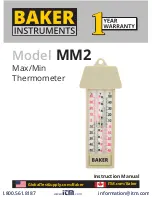
5
1. DESCRIPTION
Electronic chronothermostat for ambient temperature control (heating and air-conditioning) with GSM
phone communicator incorporated� Daily/weekly programming, change-over relay output 5(2) A 230 V~,
one supplementary output and one digital input, remote control via SMS, power supply 120-230 V~,
surface mounting, white
2. FIELD OF APPLICATION
The appliance is designed to control room temperature by acting on the control circuit of the burner or
circulation pump (heating) or on the control circuit of the air conditioner (air conditioning), ensuring an
ideal temperature, every day, throughout the week�
The large display shows the room temperature, day, time, system operating status and the daily profile set
for the current program� The GSM communicator, via SMS text messages, enables remote control of the
chronothermostat and output channel; in addition, the device is able to send alarm SMS messages such
as, for example, mains power out/restored, input activation, abnormal temperature, etc�
3. REMOTE CONTROL OF THE CHRONOTHERMOSTAT
Thanks to the integrated GSM communicator, the chronothermostat 01913 allows the user, via simple
SMS messages, remote control of all the temperature control functions of the device�
Besides the functions related to the chronothermostat, the device enables remote control of an auxiliary
output (to control a generic load) and a digital input (to detect any alarms)�
In addition, the device, via SMS messages, can supply other alarm signals such as no mains power and
temperature less/greater than a preset range (set by the user)�
4. MAIN FUNCTIONS
The chronothermostat, with remote control via simple SMS messages, enables carrying out the following
functions:
• reading and setting the state of all the modes of operation (automatic, manual, etc�) required by the
chronothermostat;
• can activate an alarm on exceeding a maximum temperature threshold set by the user;
• can activate an alarm on exceeding a minimum temperature threshold set by the user;
• reading and setting the state (on or off) of the auxiliary output;
• management of an alarm event generated by the input, no mains power, exceeding the upper or lower
temperature threshold, etc; the alarm warning is then notified by sending an SMS message to the set
telephone numbers;
• reading the state of the input�








































